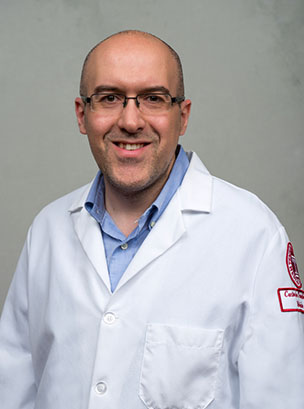Sepsis is a life-threatening systemic inflammatory condition that develops in response to infection. One of its major complications is cardiovascular dysfunction, in which deterioration of the heart muscle, driven by decreased energy production resulting from reduced oxygen and nutrient supplies, frequently ends in organ failure. Now, in a new study published online in the Journal of Molecular and Cellular Cardiology, scientists at the Lewis Katz School of Medicine at Temple University (LKSOM) are the first to show that a novel synthetic compound derived from flaxseed, a whole grain celebrated for its potent antioxidant properties, can reverse this deterioration and improve heart function in mice with sepsis.
decreased energy production resulting from reduced oxygen and nutrient supplies, frequently ends in organ failure. Now, in a new study published online in the Journal of Molecular and Cellular Cardiology, scientists at the Lewis Katz School of Medicine at Temple University (LKSOM) are the first to show that a novel synthetic compound derived from flaxseed, a whole grain celebrated for its potent antioxidant properties, can reverse this deterioration and improve heart function in mice with sepsis.
“Inflammation is an important problem in sepsis, but equally important is maintaining energy production in the heart,” explained Konstantinos Drosatos, PhD, senior investigator on the new study and Assistant Professor of Pharmacology and Assistant Professor in the Center for Translational Medicine and the Center for Metabolic Disease Research at LKSOM. “Cardiovascular complications increase sepsis mortality by 80 to 90 percent. One reason for this is that septic cardiac dysfunction increases oxidative stress, which damages mitochondrial DNA and proteins, so we wanted to know whether applying an antioxidant to scavenge reactive oxygen species (ROS) would improve heart function in sepsis.”
To answer this question, Dr. Drosatos and colleagues examined the effects of a compound known as LGM2605, a synthetic version of the antioxidant lignan secoisolariciresinol diglucoside (SDG) found in flaxseed. LGM2605 was developed by Melpo Christofidou-Solomidou, PhD, senior collaborator and author on the new study and Research Professor of Medicine in the Pulmonary, Allergy and Critical Care Division of the Department of Medicine at the Perelman School of Medicine at the University of Pennsylvania.
The researchers administered LGM2605 to septic mice and then analyzed cardiac tissues for various changes, including alterations in ROS levels and in abundance of mitochondria, the organelles responsible for the vast majority of energy production in cells. Treatment with LGM2605 six hours after the onset of sepsis significantly reduced ROS accumulation in heart cells and restored energy production. Mechanistic studies revealed beneficial impacts on mitochondria, with LGM2605 improving mitochondrial abundance and function. Moreover, the researchers found that daily administration of LGM2605, in combination with an antibiotic, led to greater reductions in mortality from sepsis compared with daily administration of an antibiotic alone.
The new work adds to the idea that restoring energy production in the heart is critical to overcoming septic cardiac dysfunction and improving survival in sepsis, a concept that Dr. Drosatos has been exploring in the past decade. In previous work, his team elucidated the mechanism underlying energy loss in septic cardiac cells.
“An important next step in our work is to explore whether LGM2605 and other substances that stimulate energy production in the cells are candidates as novel interventions for sepsis in human patients,” Dr. Drosatos said. “We also want to see if this metabolic component of sepsis, involving mitochondrial dysfunction and energy deficiency, affects other cell types in the body, not just heart cells.”
The new study was performed primarily by Dimitra Kokkinaki, a visiting graduate student from the University of Crete, Greece, and Matthew Hoffman, a graduate student of LKSOM’s MD-PhD program. Other investigators contributing to the work include Charikleia Kalliora, Center for Translational Medicine and Department of Pharmacology, LKSOM, and Faculty of Medicine, University of Crete, Greece; Ioannis D. Kyriazis, Anna Maria Lucchese, Santhanam Shanmughapriya, Dhanendra Tomar, Muniswamy Madesh, and Walter J. Koch, Center for Translational Medicine and Department of Pharmacology, LKSOM; Jennifer Maning and Anastasios Lymperopoulos, Laboratory for the Study of Neurohormonal Control of the Circulation, Nova Southeastern University College of Pharmacy, Fort Lauderdale, Florida; Joon Young Park, Cardiovascular Research Center, LKSOM; and Hong Wang and Xiao-Feng Yang, Cardiovascular Research Center and Center for Metabolic Disease Research, Department of Pharmacology, LKSOM.
The research was supported in part by National Institutes of Health grants HL112853, HL130218, HL138268, P01HL091799, and 1P42ES023720 and by funding from the W.W. Smith Charitable Trust and American Heart Association.
